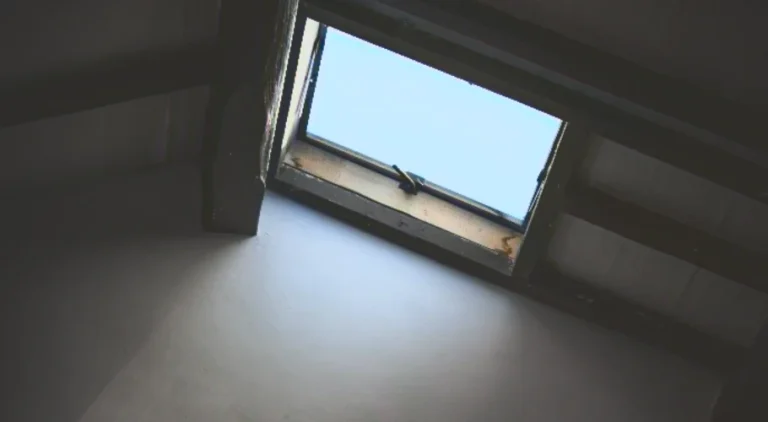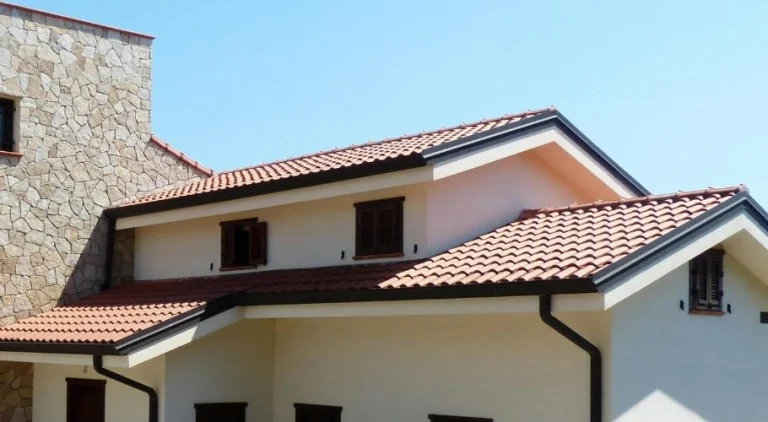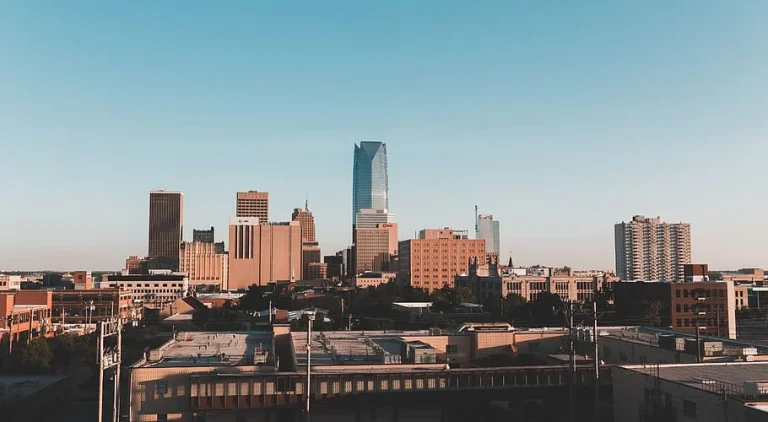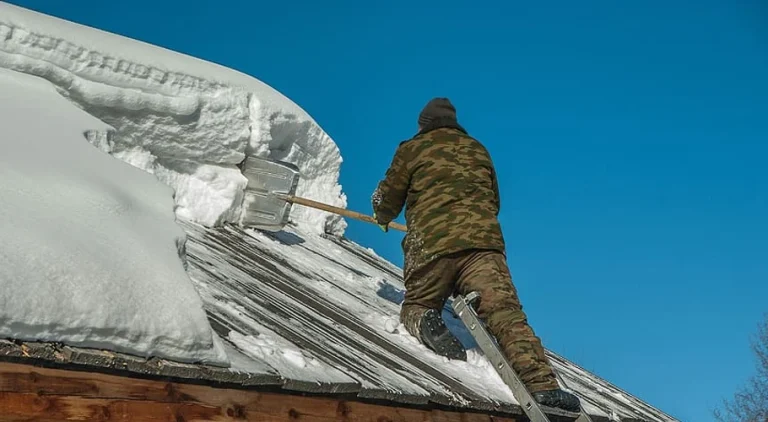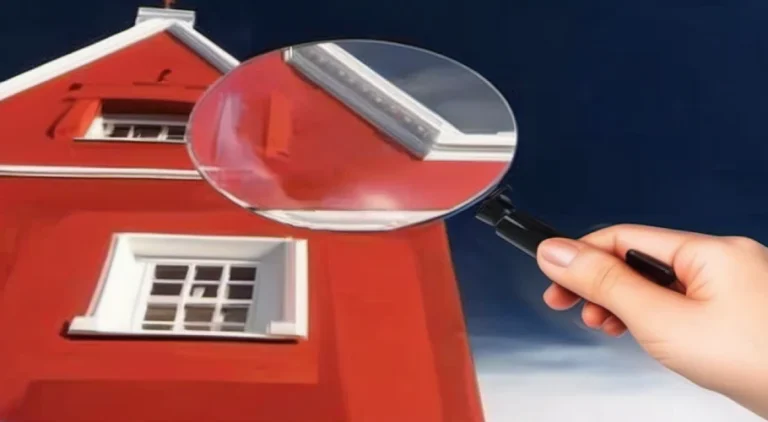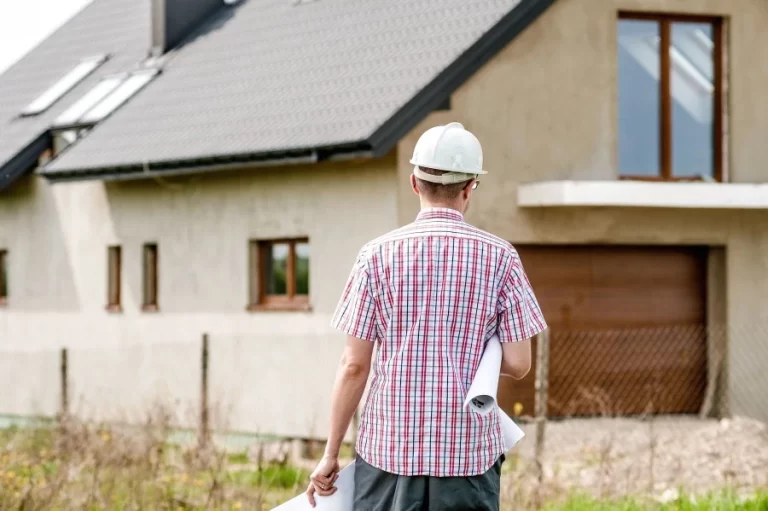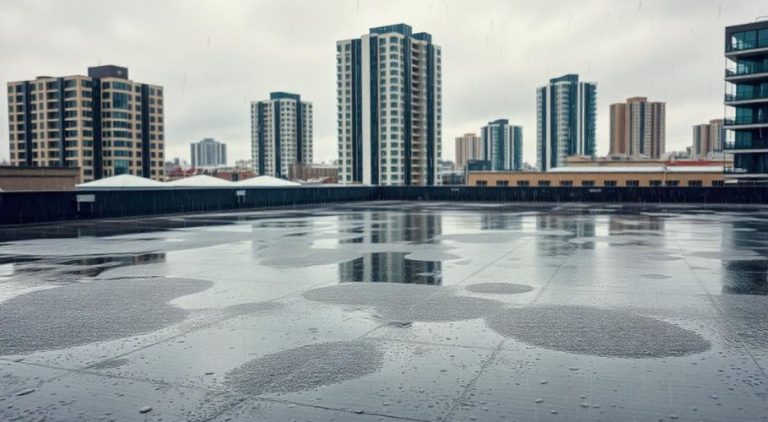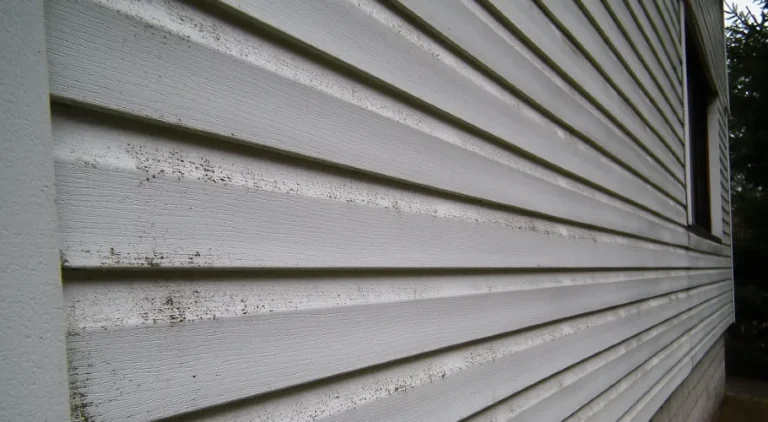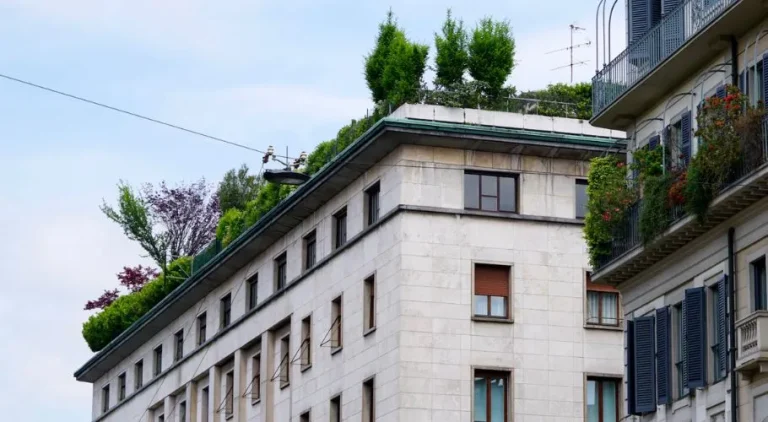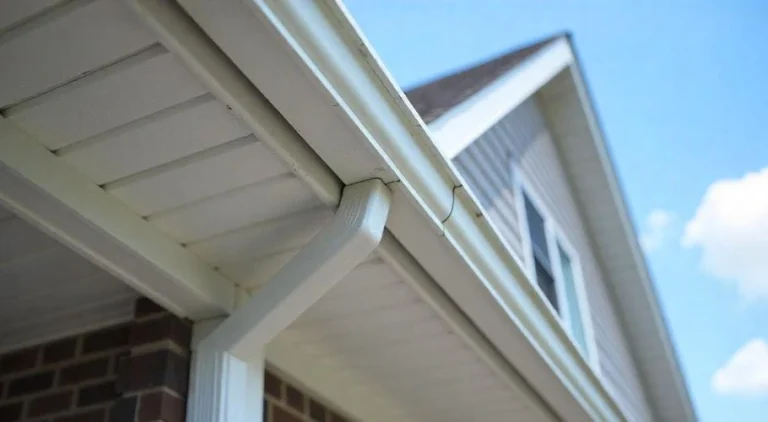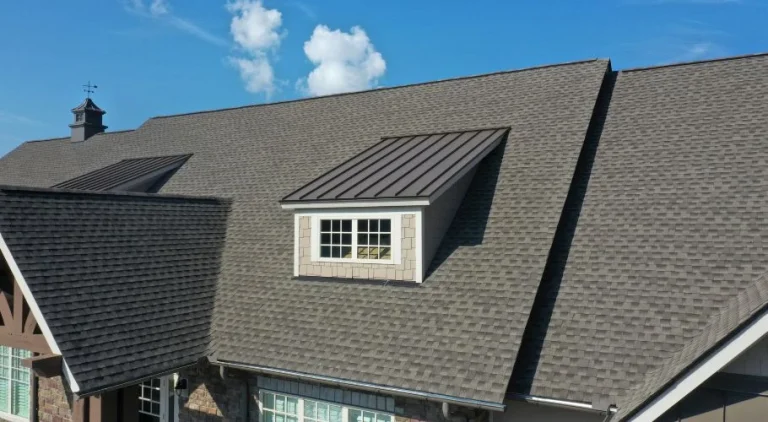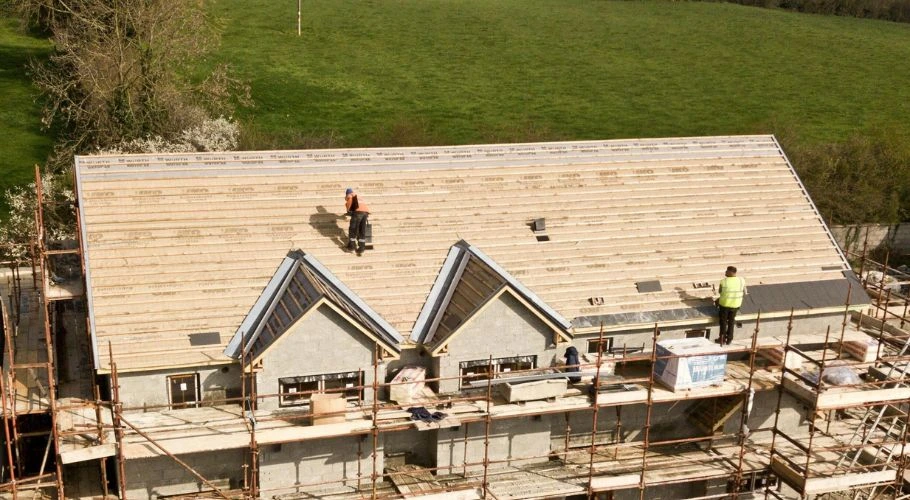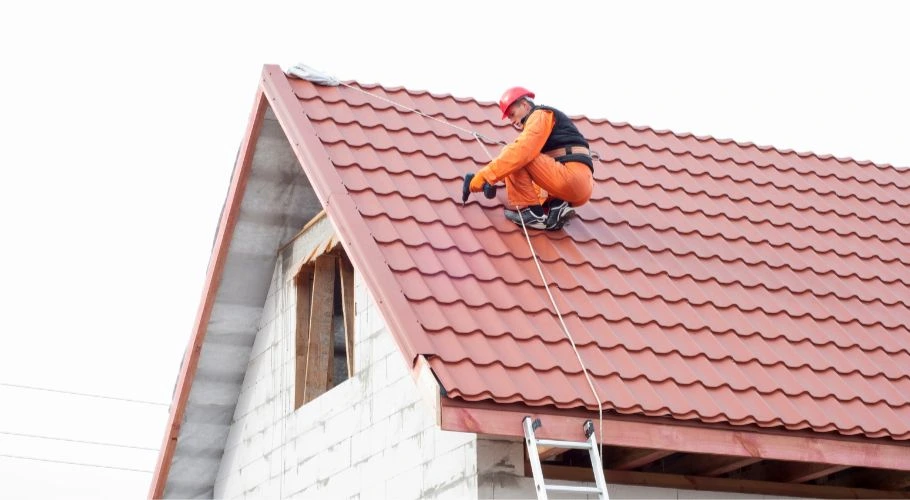
Choosing a new roof isn’t something most folks do every day—but when it’s time, you want to get it right. Between the blazing Oklahoma sun, surprise hailstorms, and gusty winds that feel like they came out of nowhere, your roof has to do more than just look good. It needs to hold strong. At Robbins Roofing, we’ve helped homeowners all across Mustang, OKC, Edmond, and Norman find roofing materials that fit their style, budget, and the wild weather we all know too well. So if you’re staring at samples and second-guessing everything, don’t worry—we’re here to walk you through it.
Roofing Materials That Work in Oklahoma
Oklahoma weather doesn’t play around—and not every roof can handle it. Below are some of the most popular roofing materials and how they stack up in our local climate.
Asphalt-Based Options
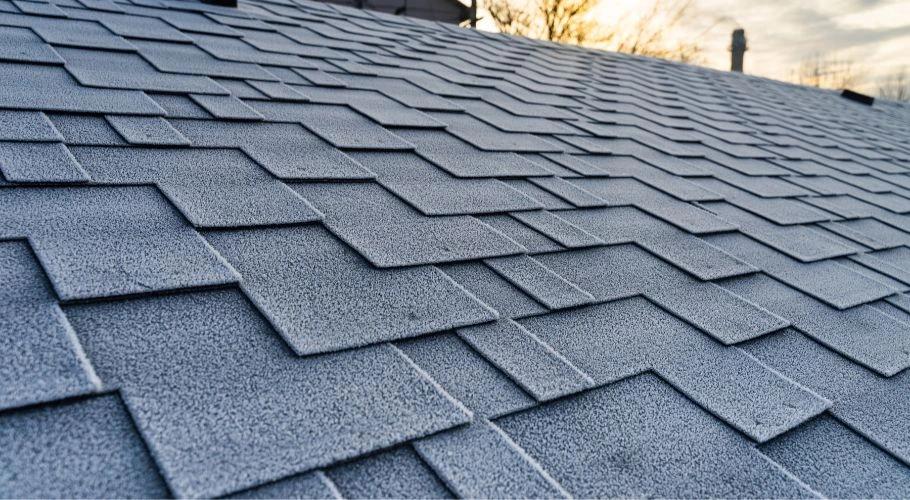
Traditional Asphalt Shingles
A traditional asphalt shingle roof are a favorite for Oklahoma homeowners thanks to their affordability and reliable performance. They work well on most homes across Mustang, OKC, Edmond, and Norman, and they’re easy to repair or replace after storm damage. If you want a no-fuss option that blends into most neighborhoods and holds up reasonably well to sun and wind, asphalt shingles are a solid choice—especially for budget-conscious roofing projects.
Architectural Shingles (aka Dimensional Shingles)
Architectural shingles are a more durable and dimensional upgrade from standard 3-tab shingles. They not only offer better resistance to Oklahoma’s high winds and hailstorms, but they also provide added texture and depth for enhanced curb appeal. Perfect for homeowners looking for something a little more substantial, this option strikes a great balance between longevity, value, and appearance.
Composite Shingles
Composite shingles are engineered to give you the high-end look of wood shakes, slate, or clay tile—without the heavy weight or ongoing upkeep. Made from a mix of synthetic materials, they’re built to last and perform well under tough weather conditions. If you’re aiming for a designer look that stands out but still handles Oklahoma’s changing seasons, composite shingles are a stylish and dependable option.
Asphalt Roofing Materials
Material | Durability | Energy Efficiency | Maintenance | Cost | Style |
|---|---|---|---|---|---|
Traditional Asphalt | Moderate | Moderate | Low | $ | Classic |
Architectural Shingles | High | Moderate | Low | $$ | Dimensional/Modern |
Composite Shingles | High | High | Low | $$$ | Slate/Wood Lookalike |
Metal Roofing Options
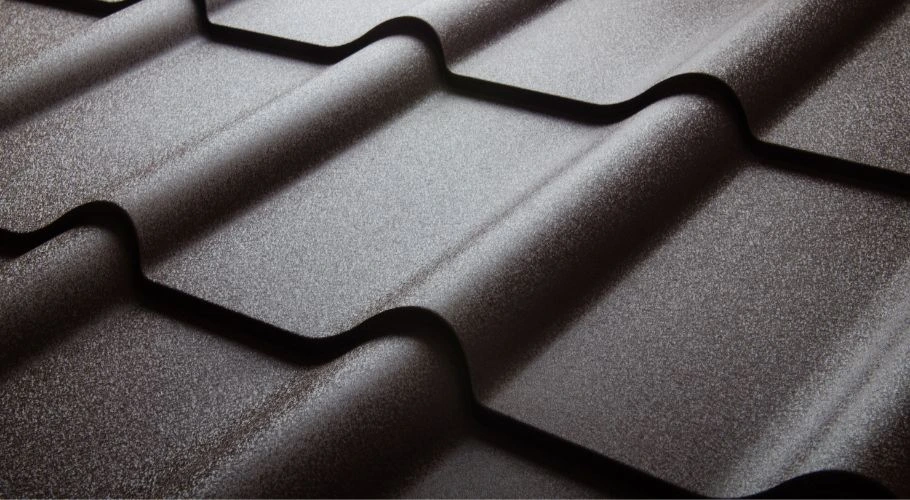
Metal Roofs
Metal roofs have become increasingly popular in Oklahoma—and it’s easy to see why. They’re tough, long-lasting, and reflect heat, which helps reduce cooling costs during our brutal summers. Whether you’re going for a clean, modern farmhouse aesthetic or just want something that holds up against hail and high winds, metal roofing is a smart investment. It’s especially great for rural properties, barns, and modern homes across Mustang and the OKC metro.
Standing Seam Metal Roof
A standing seam metal roof takes everything homeowners love about metal and kicks it up a notch. Its raised, interlocking seams run vertically and help prevent water intrusion—an ideal feature when spring storms hit. Sleek and low-maintenance, it’s perfect for homeowners looking for high performance and a clean architectural look. It does come with a higher price tag, but many consider it worth the long-term reliability.
Metal Shingles
If you want the resilience of metal without the industrial vibe, metal shingles are a fantastic compromise. These mimic the look of wood shakes, slate, or clay tile, offering both charm and strength. They’re easier to install and often more lightweight than full panels, making them a good fit for retrofitting older homes without major structural upgrades.
Stone-Coated Steel
Stone-coated steel combines the best of both worlds: the strength of steel and the textured, high-end look of traditional materials like tile or shake. It’s more impact-resistant than many other options, making it a great fit for areas prone to hail and flying debris. Plus, it works well on both classic and contemporary homes throughout Oklahoma, offering versatility without compromising durability.
Metal Roofing Materials
Material | Durability | Energy Efficiency | Maintenance | Cost | Style |
|---|---|---|---|---|---|
Metal Roof (General) | High | High | Low | $$$ | Modern/Farmhouse |
Standing Seam Metal Roof | Very High | High | Very Low | $$$$ | Sleek/Contemporary |
Metal Shingles | High | High | Low | $$$ | Slate/Wood Lookalike |
Stone Coated Steel | High | Moderate | Low | $$$$ | Tile/Shake Look |
Tile & Specialty Materials
Clay Tiles
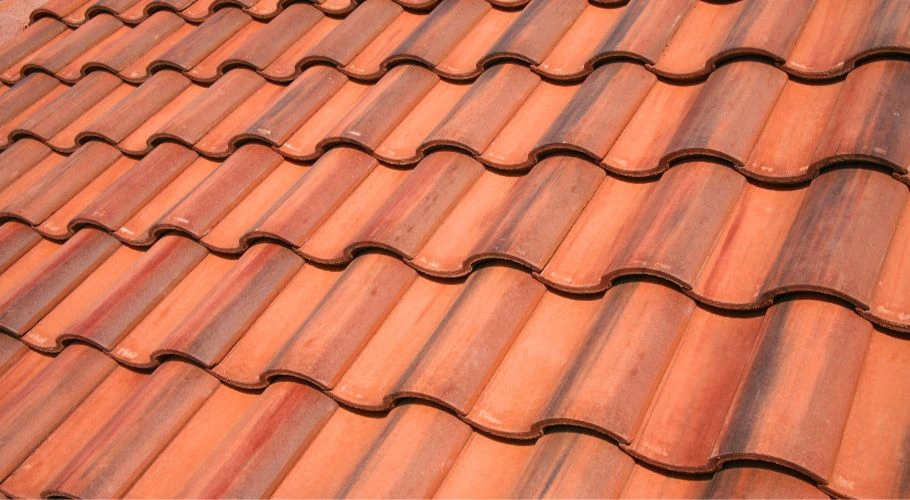
Clay tiles offer a timeless, Southwestern-inspired look and are especially effective in hot climates like Oklahoma’s. Their ability to reflect heat and resist fire makes them a practical option—especially for homes aiming for a Spanish or Mediterranean style. Just keep in mind: they’re heavier than most5t materials.
Concrete Tiles
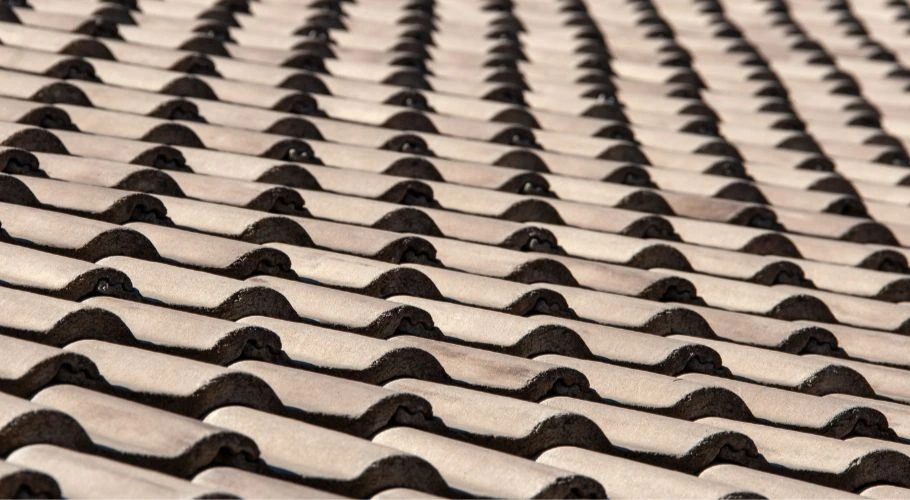
Concrete tile roofs give you a similar appearance to clay, but at a lower price point and with more flexibility in color and design. They’re durable enough to stand up to Oklahoma’s shifting weather, though they’re still on the heavier side and may call for roof reinforcement. A solid option for homeowners who want longevity and style without going all-in on premium materials.
Slate Roofs
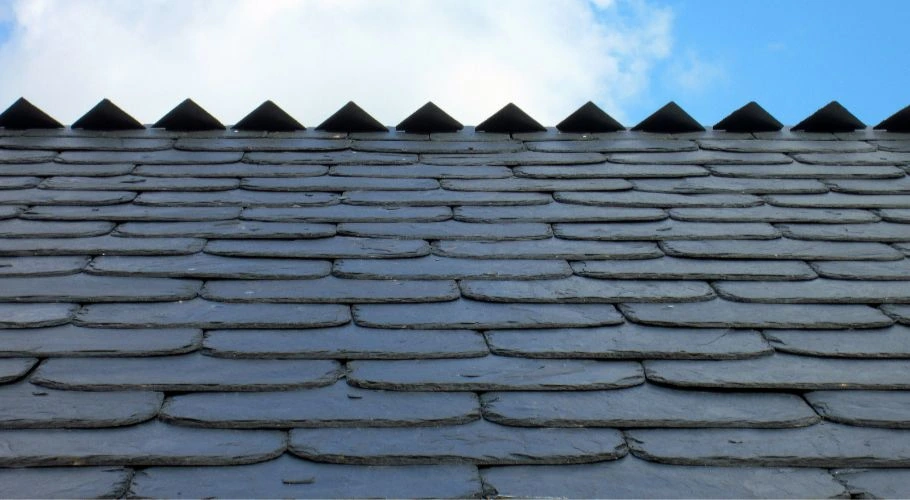
Slate is the crown jewel of roofing—naturally elegant, incredibly durable, and virtually fireproof. It can last over a century with the right care. However, it’s also one of the heaviest and most expensive roofing materials out there. Slate roofs are best suited for high-end homes with reinforced roof structures and homeowners planning to stay for the long haul.
Wood Shingles and Wood Shakes
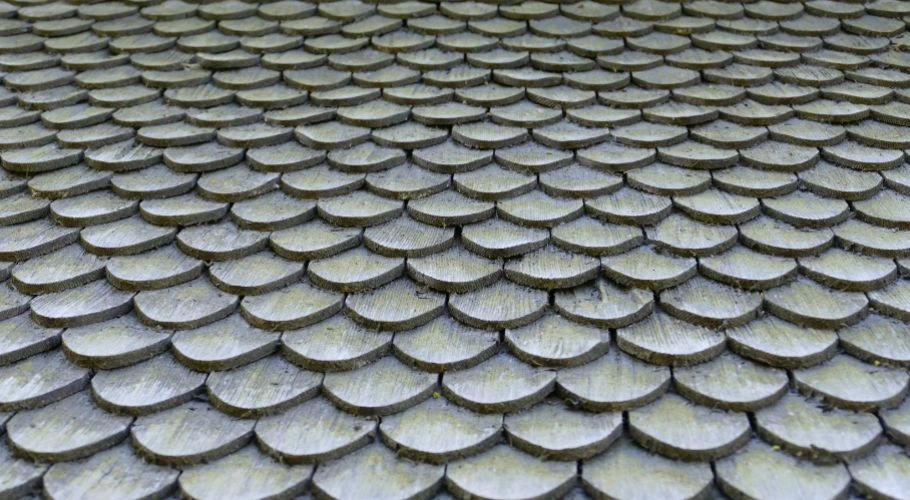
Wood shingles and wood shakes bring natural beauty and a classic look. Wood roofs are less common today due to maintenance demands and fire concerns, but they still have a place in the right setting. They offer natural insulation properties and can help reduce cooling costs.
Tile & Natural Materials
Material | Durability | Energy Efficiency | Maintenance | Cost | Style |
|---|---|---|---|---|---|
Clay Tile | Very High | High | Moderate | $$$$ | Southwestern |
Concrete Tile | High | Moderate | Moderate | $$$ | Versatile |
Slate Roof | Exceptional | Moderate | High | $$$$$ | Premium/Classic |
Wood Shakes | Moderate | High | High | $$$ | Rustic/Natural |
Flat Roofing Systems
Built Up Roofing
Used mostly on commercial buildings or low-slope homes, built up roofing consists of multiple layers of asphalt and fabric. It creates a waterproof barrier and holds up well under foot traffic, but it’s heavier and more complex to install.
Membrane Roofing
Perfect for flat roofs, membrane roofing includes materials like EPDM (rubber roof), TPO, and PVC. These systems are lightweight, flexible, and provide great protection against leaks.
Rolled Roofing
Rolled roofing is a budget-friendly option often used on sheds, garages, or flat-roofed additions. It’s quick to install but doesn’t offer the same longevity or appearance as other roofing types.
Flat & Low-Slope Roofing
Material | Durability | Energy Efficiency | Maintenance | Cost | Best Use |
|---|---|---|---|---|---|
Built Up Roofing | High | Low | Moderate | $$ | Flat Residential/Commercial |
Membrane Roofing | Moderate | High | Low | $$ | Modern Low-Slope Homes |
Rolled Roofing | Low | Low | Low | $ | Utility Sheds, Garages |
Sustainable & Modern Alternatives
Living Roof / Green Roof
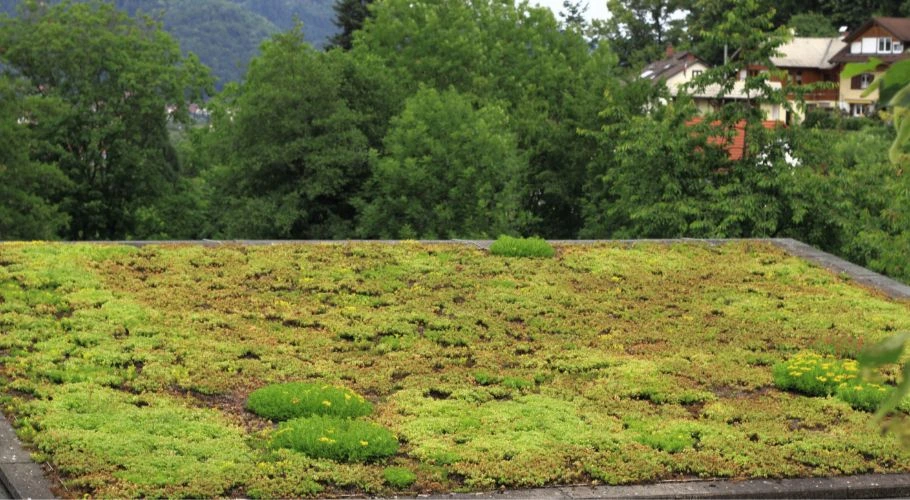
A living roof—or green roof—is covered in vegetation and soil, offering natural insulation and improved energy efficiency. While rare in Oklahoma due to our climate, they’re gaining popularity in eco-friendly builds and can be incredibly effective when designed correctly.
Flat Roofs in Residential Builds
Flat roofs aren’t just for commercial spaces anymore. Some modern residential designs feature flat roofs that can be finished with membrane roofing, built up systems, or even green roof installations. They require careful planning and proper drainage systems.
Eco-Friendly & Modern Options
Material | Durability | Energy Efficiency | Maintenance | Cost | Highlights |
|---|---|---|---|---|---|
Living/Green Roof | Moderate | Very High | High | $$$$$ | Natural insulation, stormwater control |
Rubber Shingles | High | High | Low | $$$ | Made from recycled plastic |
Roofing Felt Systems | Moderate | Moderate | Moderate | $$ | Often used with other materials |
How to Choose the Right Roofing Material
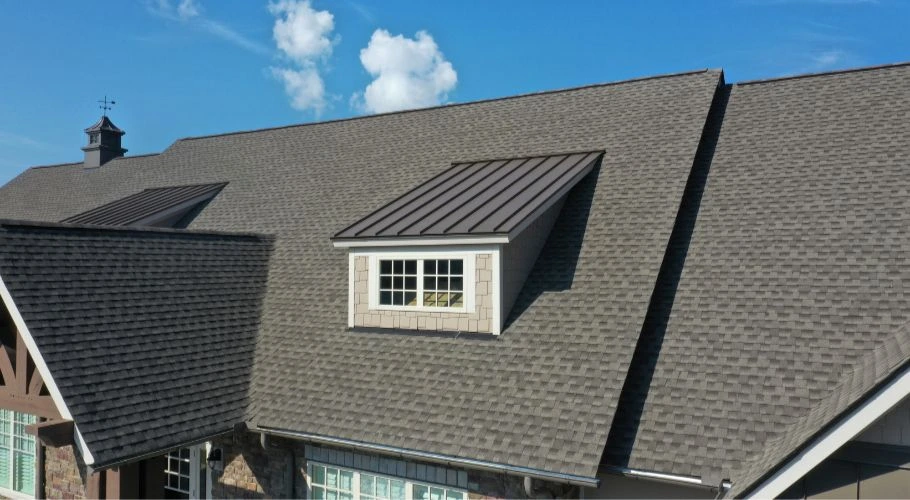
When it comes to choosing the right roofing material for your home, it’s not just about looks—or even the price per square foot. Your decision should factor in your home’s style, your long-term plans, the roof structure, and how much maintenance you’re willing to take on.
For example, a metal roof or slate roof might come with higher upfront costs, but they last significantly longer and require fewer roof replacements over time. If you’re planning to stay in your home for the next 20+ years, those materials may offer better value in the long run.
Other Things to Consider Before Your Roofing Project
Energy Efficiency and Insulation
The right roofing material can help lower your energy costs, especially during Oklahoma’s hot summers. Metal roofs, clay tiles, and green roof systems are known for their thermal insulation properties, helping your home stay cooler and reducing strain on your air conditioner. Lighter-colored materials also reflect more sunlight—another small change that can make a big impact.
Maintenance Levels
All roofs need a little attention now and then, but some materials demand more than others. Wood roofs, for example, need regular sealing and inspections, especially after heavy weather. Metal and composite shingles tend to be more hands-off, offering strong performance with minimal upkeep. Consider how often you’re realistically going to maintain your roof—and choose accordingly.
Oklahoma’s Climate
Between hailstorms, wind gusts, and long stretches of intense heat, Oklahoma roofs go through a lot. That’s why fire-resistant and impact-rated materials are worth considering. If your home has a steep pitch or unique design features, that will also impact which materials make the most sense for your pitched roof setup.
Additional Factors That Affect Roofing Choices
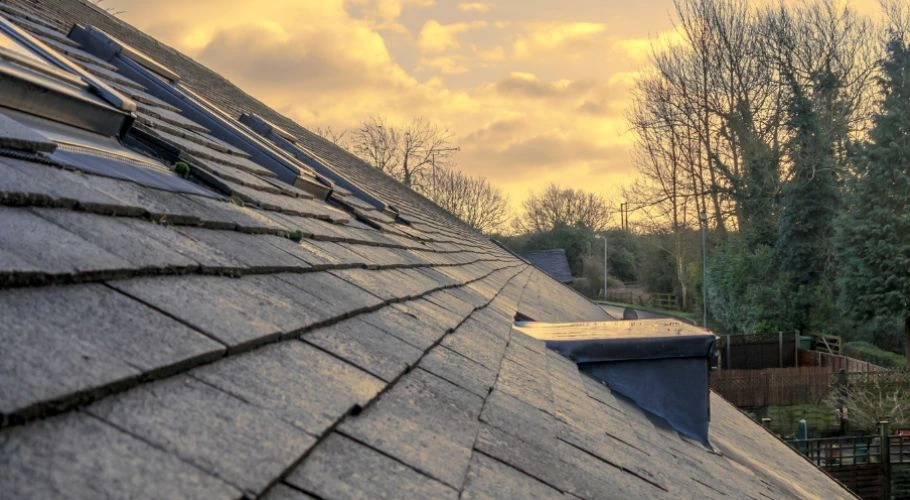
Choosing a roofing material involves more than what looks good or what fits the budget today. Ask yourself:
Can the new roof be installed over existing shingles, or will it require a full tear-off?
What does your local building department require for weight limits or ventilation?
Will your current roof structure support heavier materials like slate or tile?
Are you thinking about solar panels or future upgrades?
Some materials, like architectural shingles or standing seam metal, work well over a single layer of existing roofing. Others may need a complete reset before installation begins. It all depends on the shape of your roof and the materials you’re switching to.
Try a DIY Roof Inspection First
Before committing to a full roof replacement, it’s a smart move to do a quick inspection yourself. It won’t replace a professional evaluation, but it can give you a solid idea of your roof’s current condition.
Here’s what to look for:
Missing or damaged shingles
Granule loss in gutters
Visible sagging or soft spots
Flashing that’s cracked, loose, or rusted
Moss, algae, or moisture streaks
Leaks or light in the attic
Use binoculars from the ground and check your attic with a flashlight. Don’t climb onto your roof unless you have experience doing so safely.
If any of these signs show up—or if you’re unsure what you’re looking at—this might be the right time to talk to Robbins Roofing about roof installation services. We’ll give you honest feedback and straightforward recommendations, whether you need repairs or a full replacement.
Innovative and Eco-Friendly Roofing Options
There are many other roofing materials that offer style and sustainability. Homeowners looking for greener choices can explore options like rubber shingles made from recycled plastic, or advanced roofing felt impregnated with moisture-resistant compounds. These materials can stand up to storms and still support your commitment to eco-friendly living.
Pairing your roof with solar panels is another smart move. Metal roofs make a great base for solar installation, especially when energy efficiency is a top priority. While it’s a bigger investment upfront, combining solar and a reflective roof is a highly cost-effective roofing option over time.
What Really Impacts Roofing Costs?
When planning your roofing project, it’s important to understand what drives the total price tag. Beyond materials, your roof’s size, slope, and accessibility all affect labor costs. A steep pitched roof takes more time and safety gear to complete, which adds to your final quote.
Material costs vary widely—basic asphalt shingles are much cheaper per square foot than high-end slate or tile. And keep in mind, some materials require specialized crews, which bumps up labor even more.
Finally, long-term regular maintenance costs matter. A cheaper roof that needs constant repairs might cost more in the long run than a more durable material that just needs the occasional check-up.
Work With a Local Roofing Professional
When it comes to your roof, trust the people who know the local climate, building codes, and the kind of storms Oklahoma homes face year after year. Choosing the right type of roofing material can feel overwhelming, but you don’t have to figure it out alone. Robbins Roofing is here to help you navigate every step—from the first inspection to the final install.
We take into account your home’s architectural style, roof structure, budget, and how long you plan to stay in your home. Whether you’re dealing with a steeply pitched roof or exploring more modern designs, we’ll help you choose a roofing system that looks great and can truly withstand harsh weather conditions.
We know how to choose the best roofing material for your new roof.
Contact Robbins Roofing today—your trusted team for Oklahoma weather-tested roofing solutions.

